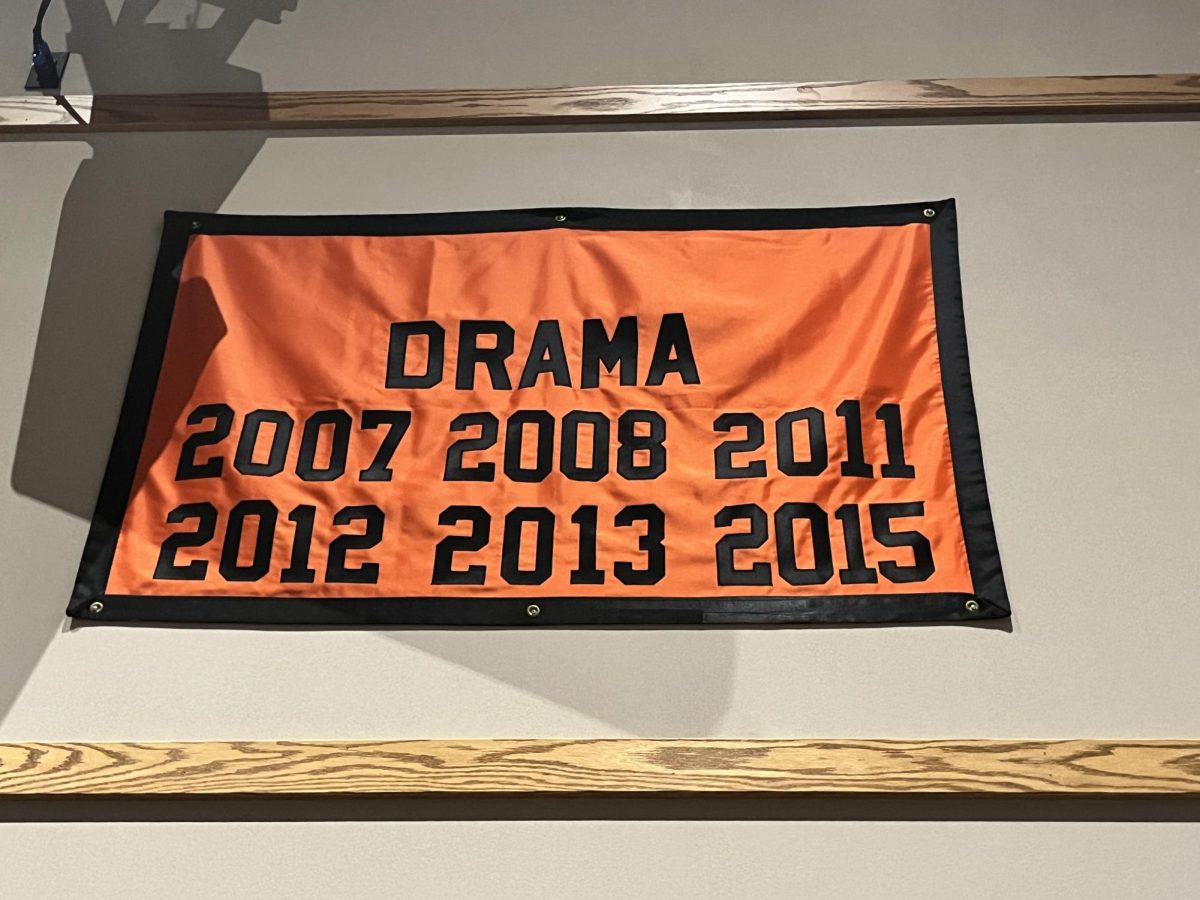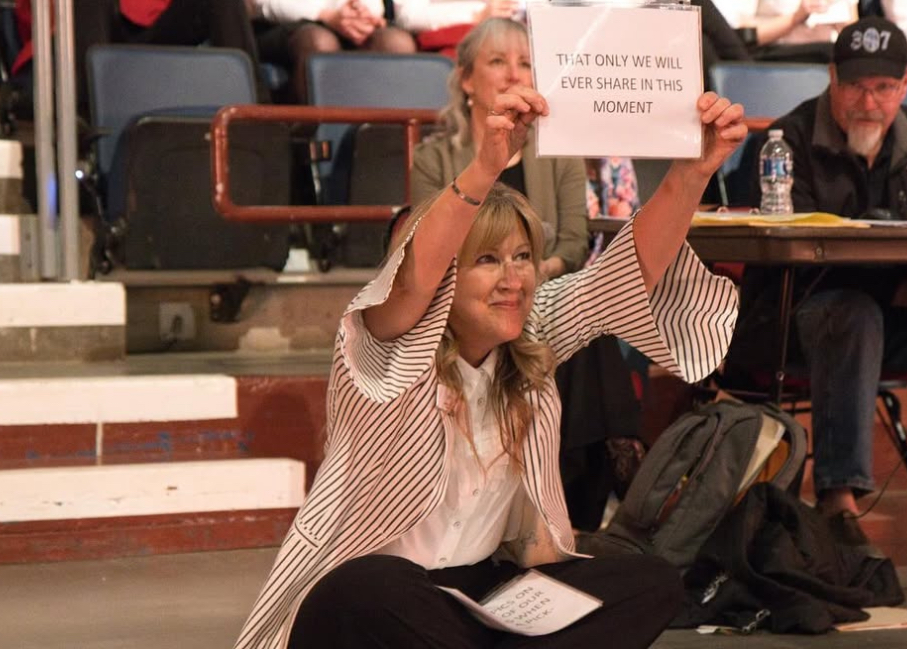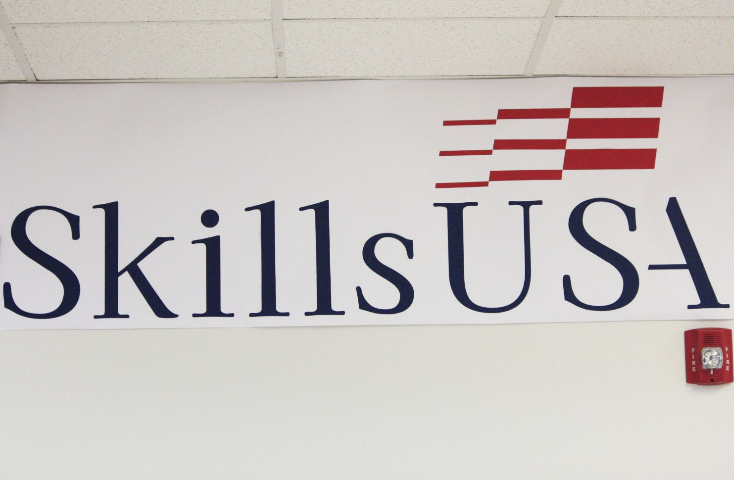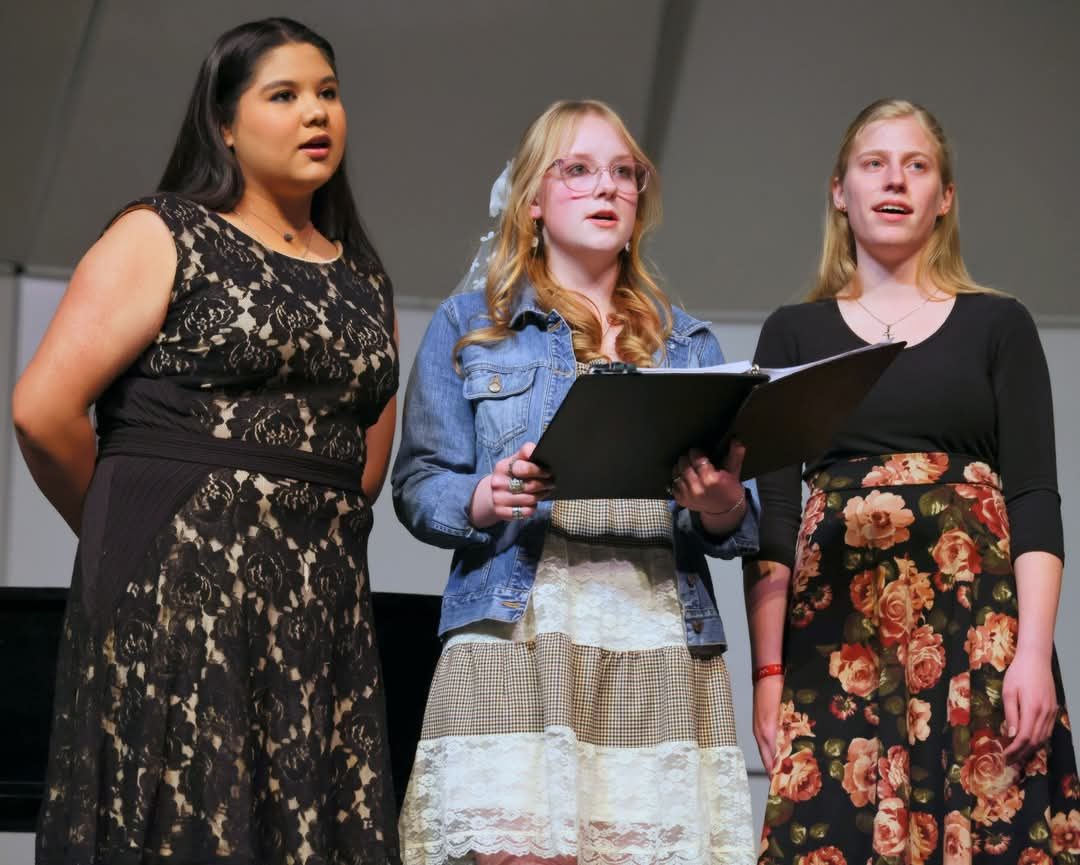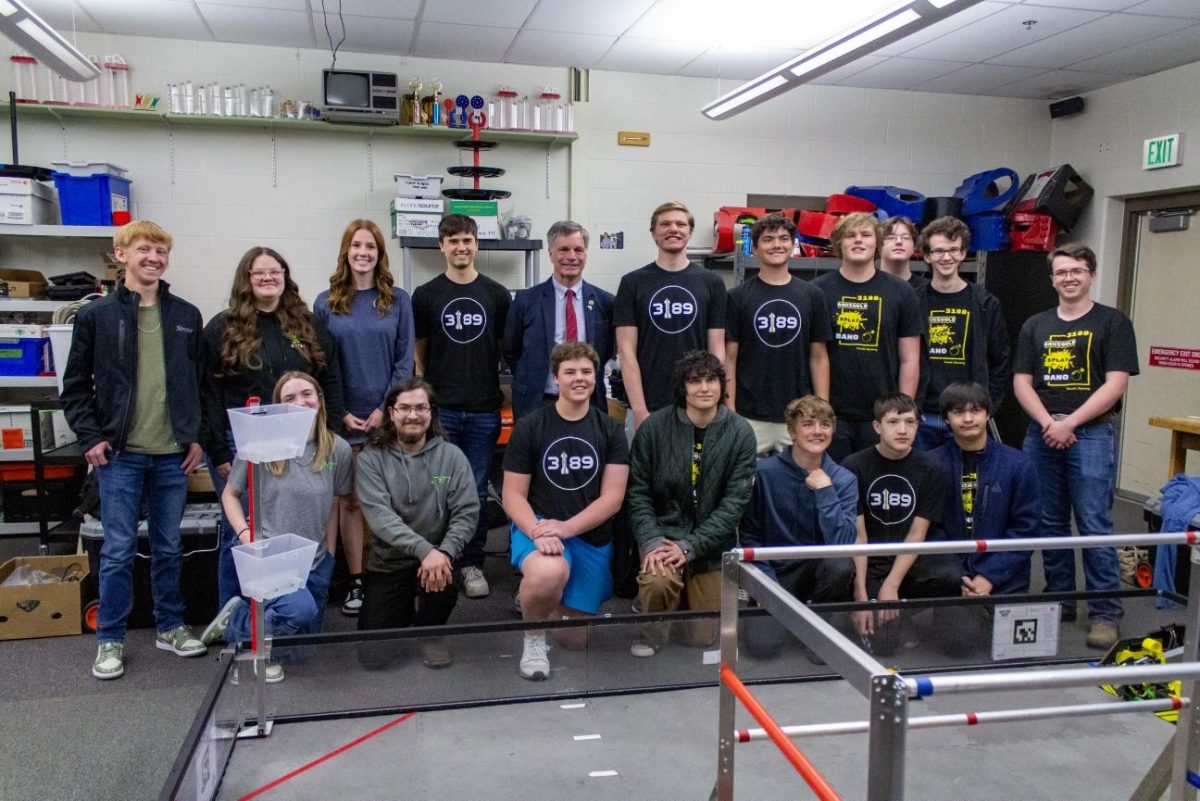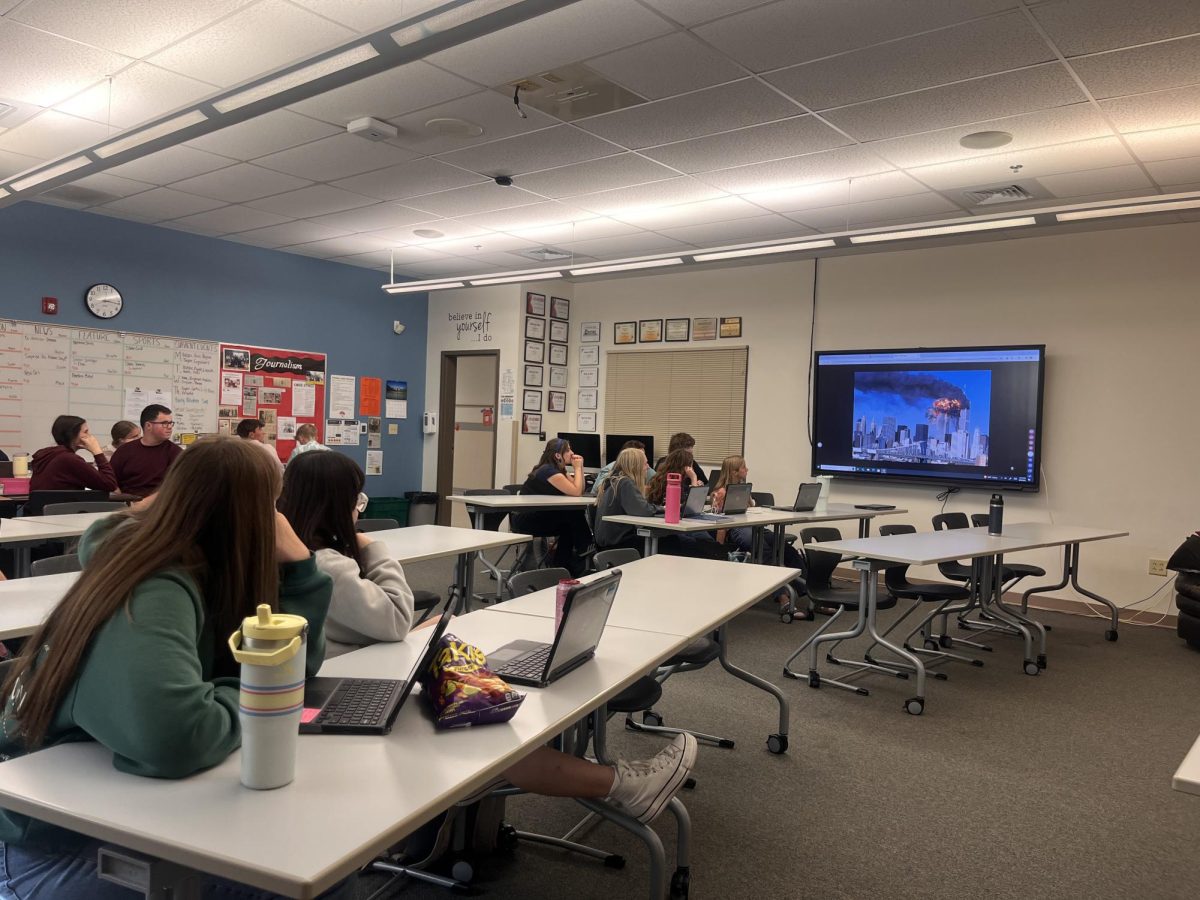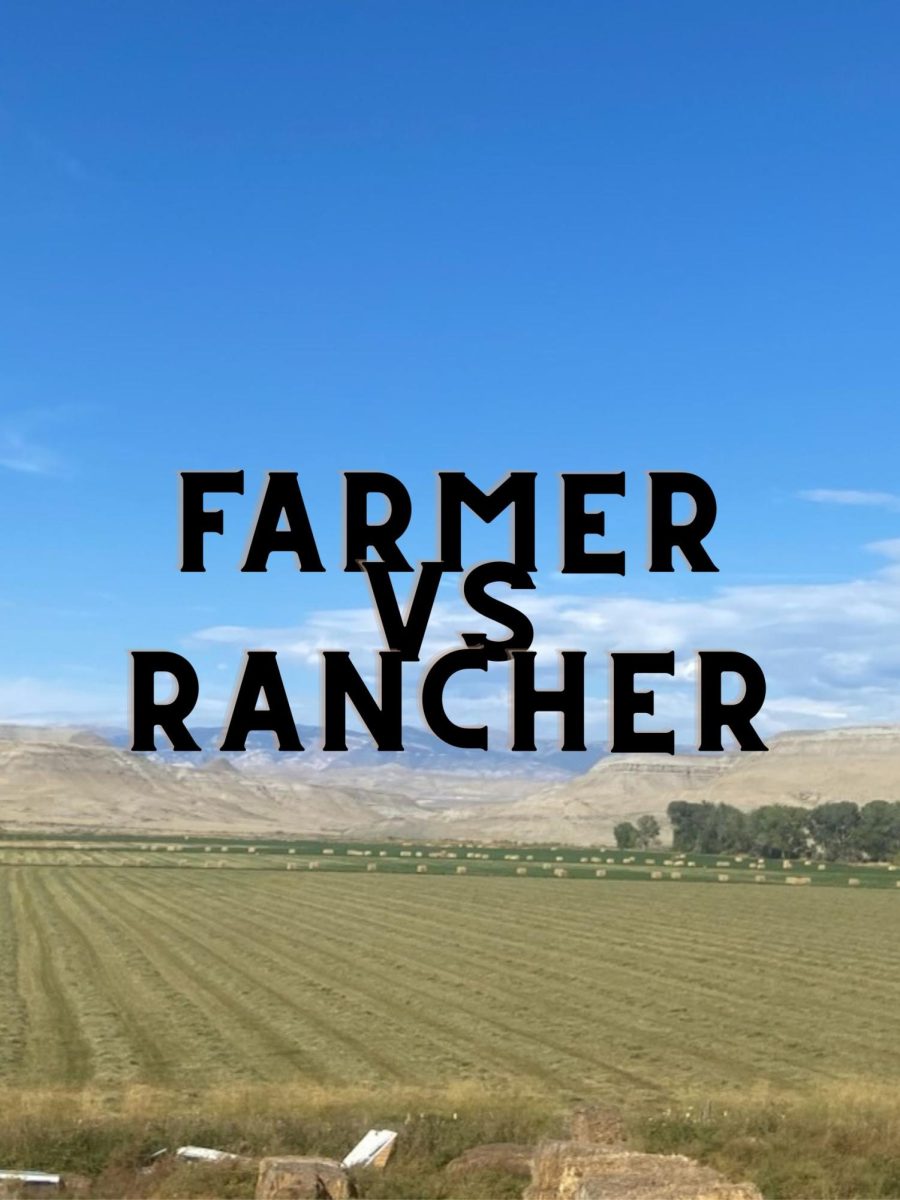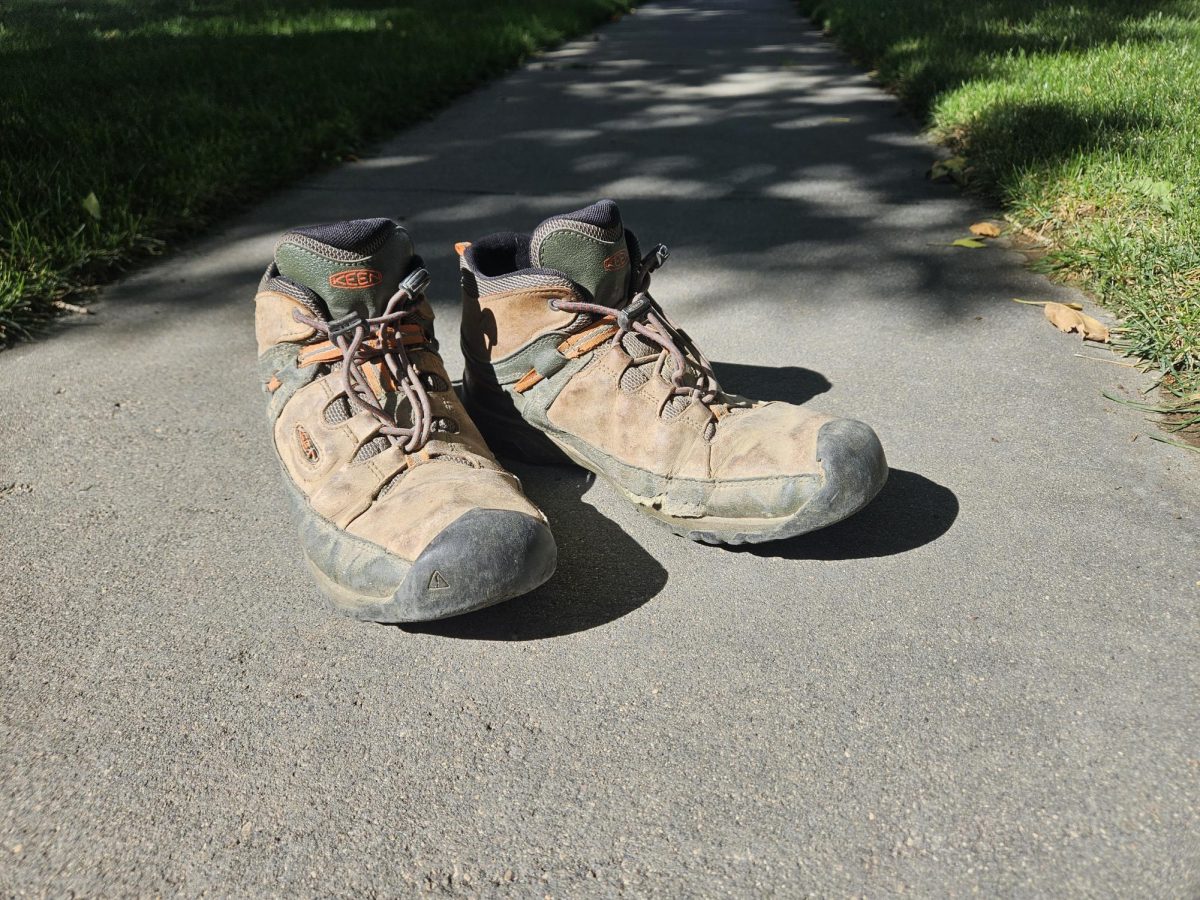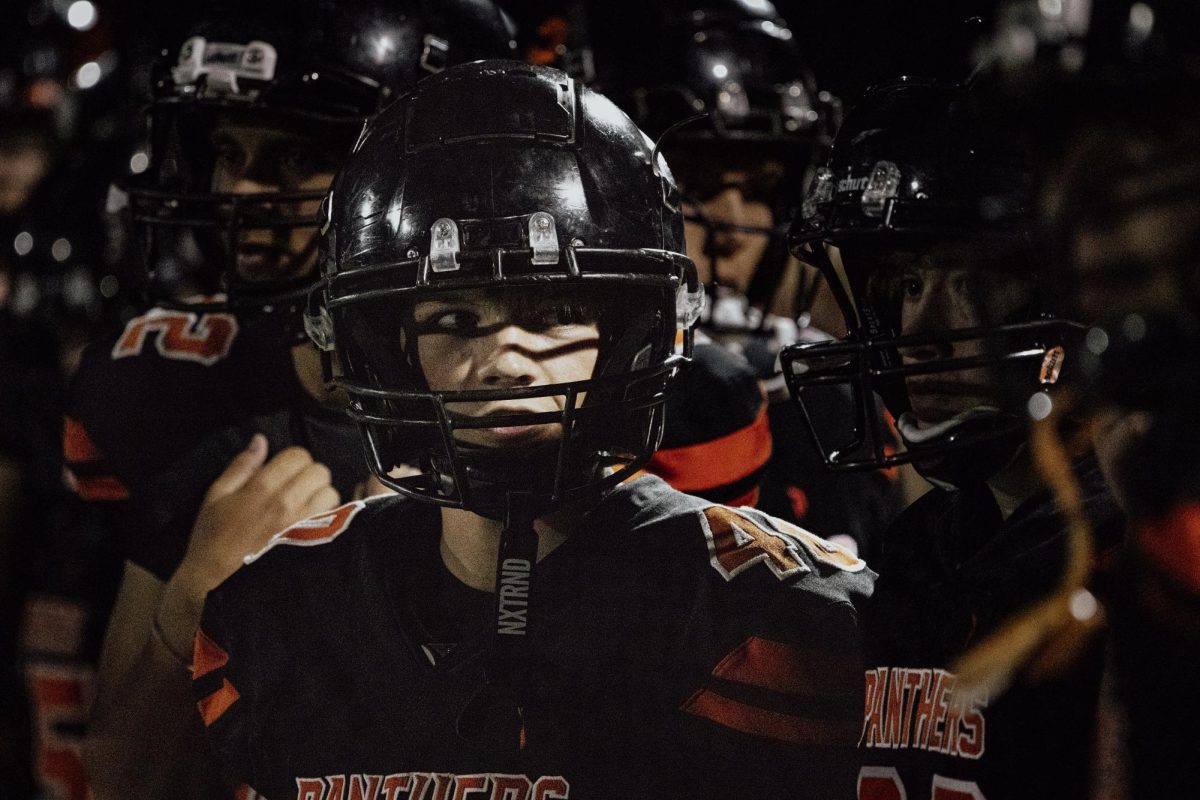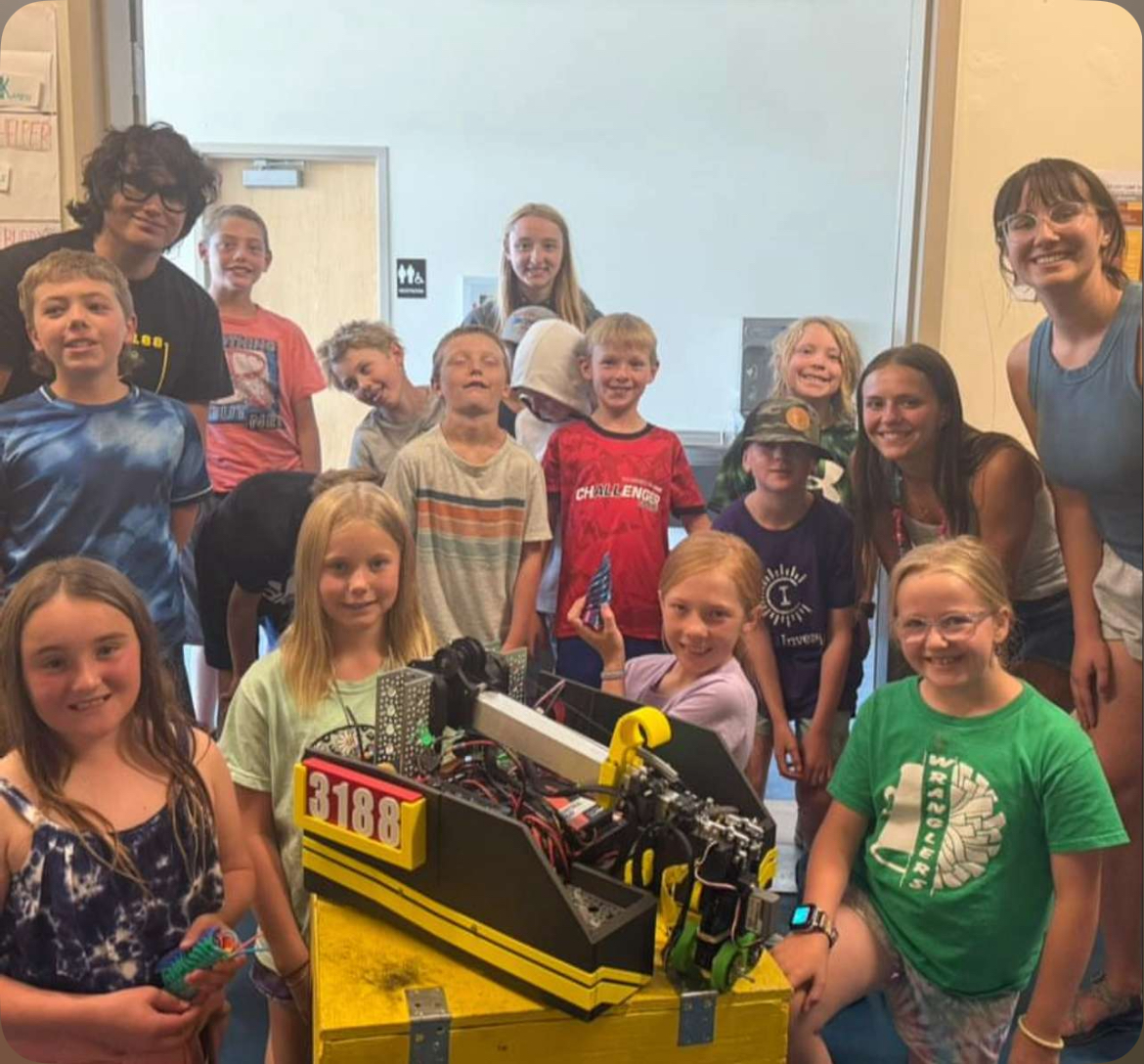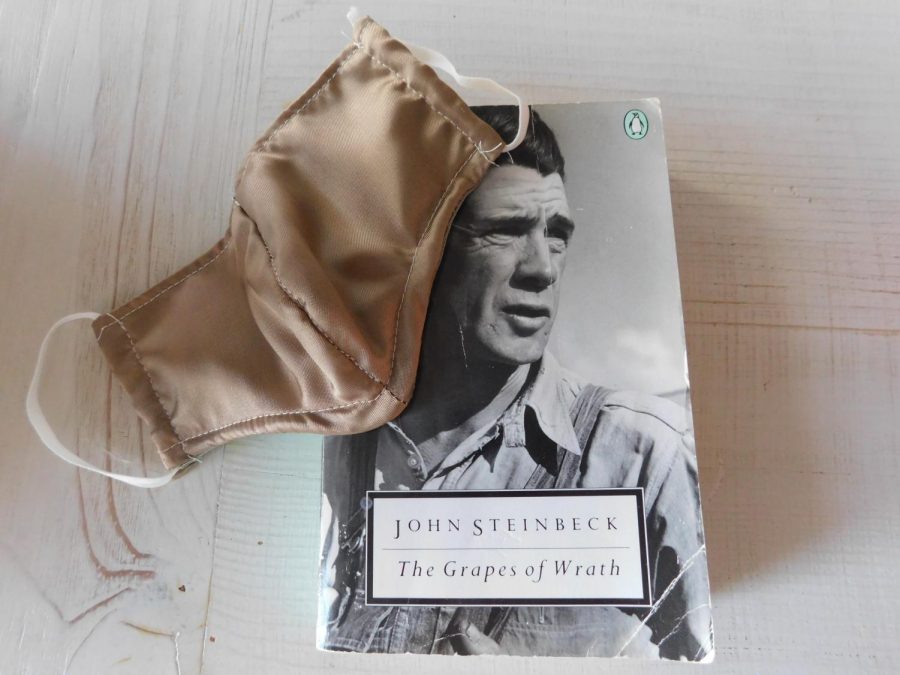2020: EVEN MORE (ECONOMIC) DEPRESSION?
John Steinbeck’s “Grapes of Wrath,” a novel about the Great Depression, with a face mask worn to prevent the spread of COVID-19.
With schools re-opening and less people in quarantine, it seems the worst of COVID-19 is over. However, this is just the calm before the economic storm. Perhaps this will be another Great Depression for America.
It’s undeniable that the economy will suffer greatly from COVID. But the numbers aren’t as bad as they were during the Great Depression and economically the problems aren’t the same; so the comparison of the two isn’t really as fair as one would think.
“On one hand, the country may soon achieve Depression-era levels of joblessness due to the coronavirus pandemic. By some metrics, we may already be close,” CNBC reporter Greg Iacurci said in a CNBC article. “But the downturn will likely fall short of “depression” standards relative to overall duration, economists said.”
“That’s because the causes of the current meltdown are much different and the government has more policy tools at its disposal to buoy the economy than it did in the early 20th century.”
One of the largest current concerns for the economy is unemployment, which also was a concern during the Great Depression. As of Aug. 31, the Bureau of Labor Statistics found that the peak of unemployment was at 14.7% in April. The following months it went down, ending July at 10.2% unemployment. Conversely, the peak unemployment rate during the Great Depression was at 24.9% in 1933.
“The unemployment rate is perhaps the best measurement by which to judge if we’re in a depression, according to Stephen Woodbury, an economics professor at Michigan State University,” Iacurci said.
Local businesses are taking a hit because of COVID; though causation is different, similar problems arose during the Great Depression. The banking system used during the Great Depression made it difficult for business owners to pay off expenses with their income.
“When COVID started, people started to get panicked and then once we hit the meat shortage, back in early spring, demand skyrocketed,” co-owner of Gallagher’s Natural Beef, Mrs. Bridget Gallagher said. “But the problem was that the butchers were so busy and backed up that we weren’t able to get extra beef in.”
Local business owners are struggling for several reasons, between difficulties with processing and the large switch to online shopping. With shortages the demand for products is up but not all local businesses have the resources to supply demand.
“I hope that more people now are more willing to support local businesses,” Mrs. Gallagher said. “And I am seeing that already; so I hope that keeps going.”
The temporary closure for some businesses led to permanent closure because with no customers, owners couldn’t keep up with payments. Though not all businesses have struggled so drastically, most businesses can agree that economic tremors have been felt.

